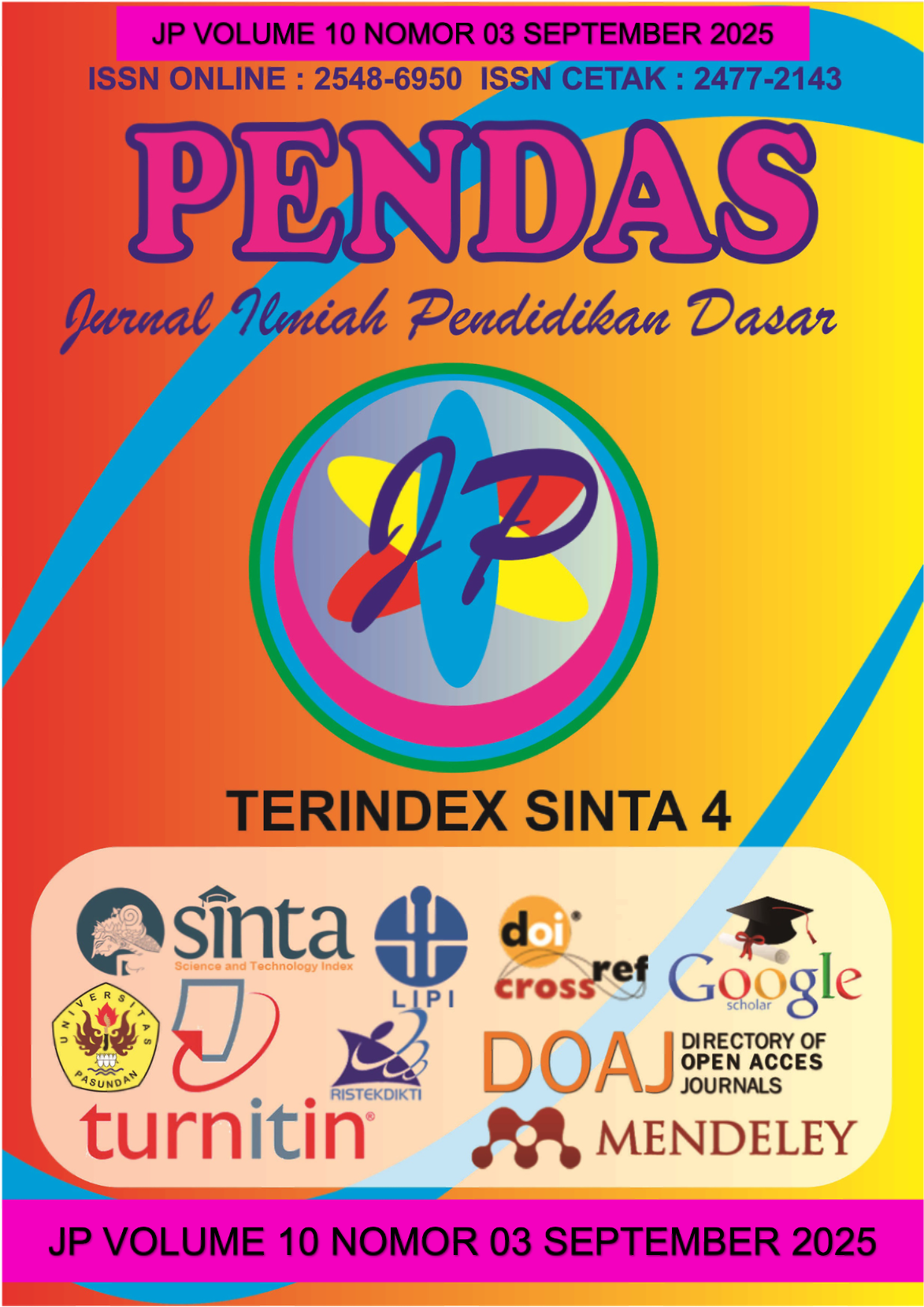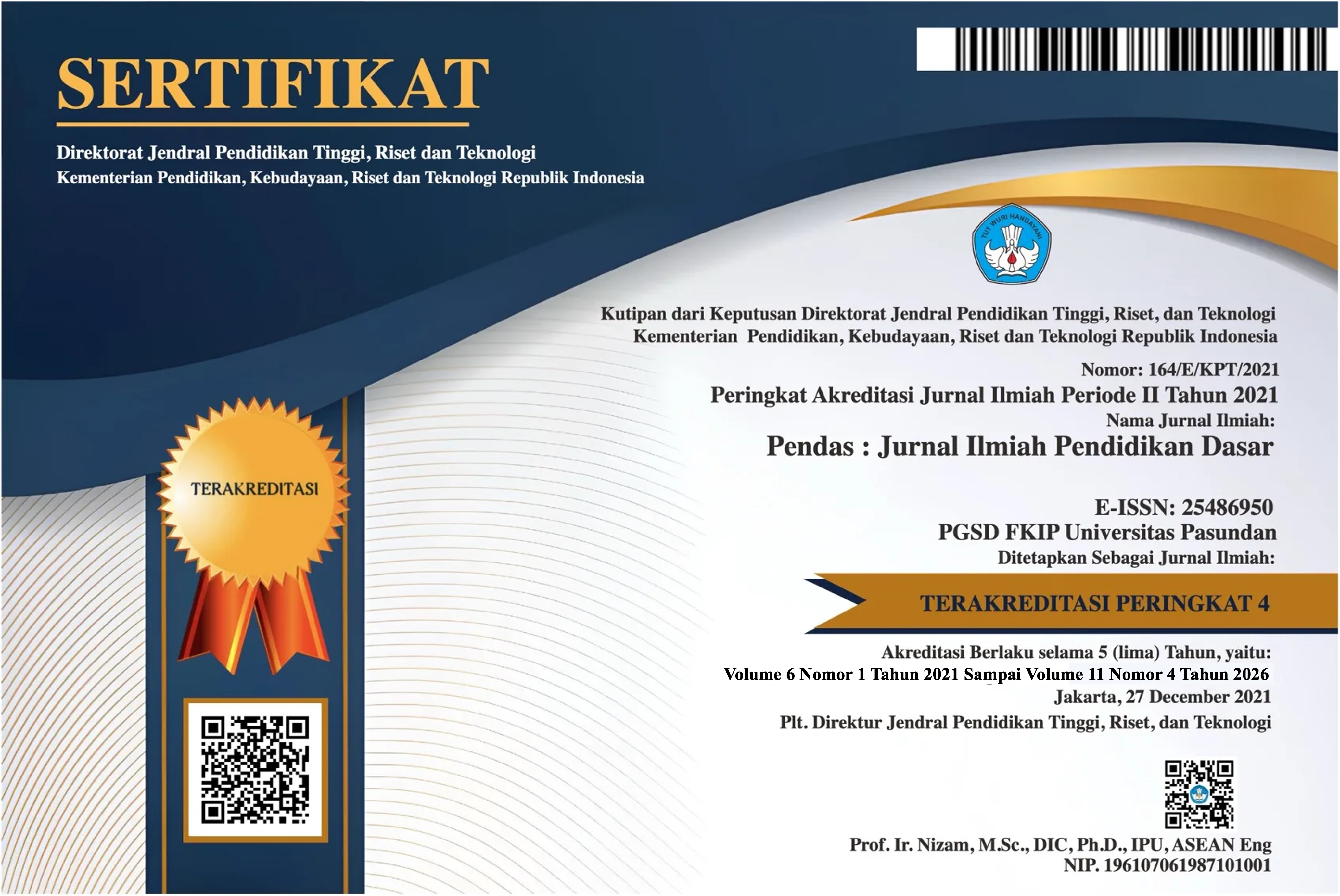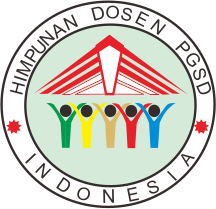KEMAMPUAN PEMECAHAN MASALAH DAN BERFIKIR KRITIS SISWA MELALUI MODEL PROBLEM BASED LEARNING DI SDN 106232 PENGGALANGAN
DOI:
https://doi.org/10.23969/jp.v10i03.29492Keywords:
Problem Based Learning, critical thinking, problem solving, mathematics instructionAbstract
This study was motivated by the low mathematics learning outcomes of fifth-grade students at SD Negeri 106232 Penggalangan, which are believed to stem from weak critical thinking and problem-solving skills. The purpose of this research was to evaluate the effectiveness of the Problem Based Learning (PBL) model in enhancing these two competencies. A quantitative approach was employed using a quasi-experimental method, involving two groups: an experimental class taught using the PBL model and a control class receiving conventional instruction. A total of 42 students were selected as samples through total sampling from both classes. The research instruments consisted of validated tests measuring critical thinking and problem-solving abilities. Data were analyzed using a two-way ANOVA test. The findings revealed a significant difference between the two groups, with students in the experimental class demonstrating higher levels of critical thinking and problem-solving skills. Furthermore, an interaction was found between the learning model and students’ initial mathematical ability in influencing learning outcomes. The study concludes that the Problem Based Learning model is effective in improving elementary school students’ critical thinking and problem-solving skills and can serve as an innovative instructional strategy
Downloads
References
Allimah, C. (2023). Penerapan Pembelajaran Berbasis Masalah untuk Meningkatkan Kemampuan Berpikir Kritis Siswa pada pelajaran IPS Kelas VIIIA SMP Negeri 9 Kota Mojokerto. Nuris Journal of Education and Islamic Studies, 3(2), 76–90. https://doi.org/10.52620/jeis.v3i2.30
Andriani, H. (2020). Pendidikan yang menumbuhkan kemampuan berpikir kritis dan kreatif. PT. Gramedia Pustaka Utama.
Azizah, N., & Suryani, S. (2023). The effect of problem-based learning on critical thinking skills in high school students. Journal of Educational Research, 15(1), 67-78.
Bachtiar Mas, R., Nasution, N., & Sofia Familawati, Z. (2023). Upaya Meningkatkan Kemampuan Berpikir Kritis Peserta Didik Kelas X SMAN 1 Rengel Kabupaten Tuban pada Materi Proses Masuknya Hindu-Buddha ke Nusantara melalui Model Pembelajaran Problem Based Learning (PBL). Jurnal Pendidikan Dan Kewirausahaan, 11(3), 912–931. https://doi.org/10.47668/pkwu.v11i3.907
Barrows, H. S. (1996). Problem-based learning in medicine and beyond: A brief overview. In L. Wilkerson & W. G. Gijselaers (Eds.), Bridging the gap: The education and training of health professionals (pp. 3-12). New Professional Books.
Campbell, D. T., & Stanley, J. C. (1963). Experimental and quasi-experimental designs for research. Houghton Mifflin
Cifarelli, V., & Nicosia, M. (2018). The importance of critical thinking in mathematics education: A study on teachers’ perceptions. Journal of Mathematics Teacher Education, 21(5), 507-522. https://doi.org/10.1007/s10857-018-9414-0
Creswell, J. W. (2012). Educational Research: Planning, Conducting, and Evaluating Quantitative and Qualitative Research (4th ed.). Boston: Pearson.
Dina Aulia Luthfiah, E. Elvis Napitupulu, H. S. (2023). Pengaruh Model Pembelajaran Berbasis Masalah terhadap Kemampuan Pemecahan Masalah Matematika Siswa Kelas VIII SMP Negeri 5 Stabat. Jurnal Cendekia: Jurnal Pendidikan Matematika, 7(2), 92–99. https://doi.org/10.37755/sjip.v6i2.332
Dolmans, D. H. J. M., De Grave, W., Wolfhagen, I. H. A. P., & van der Vleuten, C. P. M. (2016). Factors facilitating student learning in a problem-based learning environment: A systematic review. International Journal of Medical Education, 7, 91-97. https://doi.org/10.5116/ijme.56e2.c1e3
Ennis, R. H. (2011). Critical thinking: A streamlined conception. Teachning Philosophy, 34(1), 2-25. https://doi.org/10.5840/teachphil20113412
Facione, P. A. (2011). Critical thinking: A statement of expert consensus for purposes of educational assessment and instruction. The Delphi Report. Retrieved from https://www.criticalthinking.org/files/Resources/ What_is_Critical_Thinking.pdf
Facione, P. A. (2015). Critical thinking: What it is and why it counts. Insight Assessment.
Facione, P. A. (2021). Critical thinking: What it is and why it counts (3rd ed.). Insight Assessment.
Fahrurrozi, M., & Syafril, S. (2022). Berpikir dan Kemampuan Matematika. Yogyakarta: Penerbit Deepublish.
Ghozali, I. (2016). Aplikasi Analisis Multivariate dengan Program IBM SPSS 23. Semarang: Badan Penerbit Universitas Diponegoro.
Gregory, R. J. (2000). Psychological Testing: History, Principles, and Applications. Boston: Allyn & Bacon.
Gulo, W. (2002). Metodologi Penelitian. Jakarta: Grasindo
Halawa, M., & Harefa, R. (2024). Pemecahan Masalah di Sekolah Dasar. RCI Press.
Hamalik, O. (2010). Kurikulum dan pembelajaran. Bumi Aksara
Hattie, J. (2009). Visible learning: A synthesis of over 800 meta-analyses relating to achievement. Routledge.
Hmelo-Silver, C. E. (2017). Problem-based learning: What and how do students learn? Educational Psychologist, 52(1), 35-53. https://doi.org/10.1080/00461520.2016.1205557
IBM Corp. (2015). IBM SPSS Statistics for Windows, Version 23.0. Armonk, NY: IBM Corp.
Kementerian Pendidikan dan Kebudayaan Republik Indonesia. (2013). Kurikulum 2013: Buku guru kelas 4. Kementerian Pendidikan dan Kebudayaan.
Kurino, Y. D., & Ansori, Y. Z. (2024). Pemecahan masalah di sekolah dasar (E. Santoso, Ed.). PRCI Press. https://www.rcipress.rcipublisher. org/index. php/rcipress/ catalog/download/1320/2404/3342-1
Kuswanto, H. (2018). Pembelajaran berbasis masalah dalam pendidikan. Penerbit Alfabeta.
Kwon, O. N. (2008). The relationship between mathematical self-efficacy and critical thinking in mathematics. Educational Studies in Mathematics, 68(2), 119-139. https://doi.org/10.1007/s10649-007-9105-6
Lailatun Nur Kamalia Siregar, Nurul Dinda Aulia, Sayang Pasaribu, Azwar Siregar, Ardila Salisa Adristi, Putri Novia Ramayani Siregar, & Salsa Fadilla. (2023). Implementasi Metode Problem Based Learning (PBL)Dalam Pembelajaran Matematika Di SD Pelangi. Jurnal Arjuna : Publikasi Ilmu Pendidikan, Bahasa Dan Matematika, 2(1), 132–139. https://doi.org/10.61132/arjuna.v2i1.468
NCTM. (2000). Principles and standards for school mathematics. National Council of Teachers of Mathematics.
Nurhayati, I., Pramono, K. S. E., & Farida, A. (2024). Keterampilan 4C (Critical Thinking, Creativity, Communication And Collaboration) dalam Pembelajaran IPS untuk Menjawab Tantangan Abad 21. Jurnal Basicedu, 8(1), 36–43. https://doi.org/10.31004/basicedu.v8i1.6842
Nurmarliana, & Mirna Nur Alia Abdullah. (2024). Keterampilan 4C Sebagai Strategi Pengembangan Kompetensi Critical Thinking Gen Z Di Era Revolusi Industri 4.0 Dan Society 5.0. SABANA: Jurnal Sosiologi, Antropologi, Dan Budaya Nusantara, 3(1), 66–71. https://doi.org/10.55123/sabana.v3i1.3299
Mayer, R. E. (2021). Problem-solving and critical thinking in education: A cognitive perspective. Routledge.
O’Flaherty, J., & Phillips, C. (2015). The use of flipped classrooms in higher education: A scoping review. The Internet and Higher Education, 25, 85-95. https://doi.org/10.1016/j.iheduc.2015.02.002
Paul, R., & Elder, L. (2006). Critical thinking: Tools for taking charge of your professional and personal life. Pearson/Prentice Hall
Paul, R., & Elder, L. (2006). Critical Thinking: Tools for Taking Charge of Your Learning and Your Life. Pearson Education.
Paul, R., & Elder, L. (2008). Miniatur guide to critical thinking concepts and tools. Dillon Beach: Foundation for Critical Thinking Press.
Piaget, J. (1973). To understand is to invent: The future of education. Grossman.
Polya, G. (1973). How to solve it: A new aspect of mathematical method. Princeton University Press.
Polya, G. (2023). How to solve it: A new aspect of mathematical method (2nd ed.). Princeton University Press.
Rahman, A., Suhardi, & Setiawan, A. (2020). The effect of problem-based learning on students’ critical thinking skills. International Journal of Instruction, 13(2), 335-350. https://doi.org/10.29333/iji.2020.13223a
Rinaldi, D., & Kurniawan, B. (2022). Problem-based learning: A strategy to improve critical thinking in students. Journal of Teaching and Learning Studies, 10(3), 120-134.
Rusman. (2011). Model-model pembelajaran: Mengembangkan profesionalisme guru. Jakarta: PT RajaGrafindo Persada.
Sanjaya, W. (2016). Strategi pembelajaran yang inovatif: Berbasis masalah, proyek, dan keterampilan abad 21. Kencana.
Sari, N., & Fajar, M. (2023). Enhancing problem-solving skills in students through problem-based learning: A study in Indonesian high schools. Journal of Educational Research and Practice, 8(4), 45-58.
Savin-Baden, M. (2000). Problem-based learning in higher education: Untold stories. Open University Press.
Sugiyono. (2007). Metode penelitian kuantitatif, kualitatif, dan R&D. Bandung: Alfabeta.
Sugiyono. (2019). Metode Penelitian Kuantitatif, Kualitatif, dan R&D. Bandung: Alfabeta.
Sukmadinata, N. S. (2010). Metode penelitian pendidikan. Bandung: Rosda Karya.
Sukmawarti, Hidayat, O. L. (2022). Implementasi Model Problem Based Learning (PBL) Untuk Meningkatkan Kemampuan Pemecahan Masalah Matematis Siswa. Symmetry: Pasundan Journal of Research in Mathematics Learning and Education, 4(volume 4), 886–894. https://doi.org/10.23969/symmetry.v4i2.2061
Sulastri, A. (2024). Problem-based learning in fostering critical thinking: A comprehensive review. Journal of Educational Theory and Practice, 12(1), 52-65.
Supriyono, E. (2015). Pemecahan masalah dalam pembelajaran matematika. PT. Rineka Cipta.
Suyanto, P., & Jihad, A. (2013). Menjadi guru profesional: Strategi meningkatkan kualifikasi dan kualitas guru di era global. Erlangga
Syafril, S., & Fahrurrozi, M. (2019). Kemampuan Berpikir Kritis Matematis. Yogyakarta: Penerbit Deepublish.
Talentics. (2023). Critical Thinking: Definisi, Proses, dan Cara Meningkatkan.
Tan, O. S., & Lee, P. (2023). Pembelajaran berdasarkan masalah: Teori dan praktik. Canada: Seng Lee Press.
Trianto, M. (2019). Model-model pembelajaran inovatif. Kencana.
Widodo, W., & Rahmawati, R. (2022). Problem-based learning as a strategy to develop problem-solving skills. Journal of Innovative Learning Practices, 12(2), 87-100
.Zulkardi, Z. (2002). Mathematics education: A case study of Indonesia. In Proceedings of the International Conference on Mathematics Education in a Global Community (pp. 1-9)
Downloads
Published
Issue
Section
License
Copyright (c) 2025 Pendas : Jurnal Ilmiah Pendidikan Dasar

This work is licensed under a Creative Commons Attribution 4.0 International License.



















